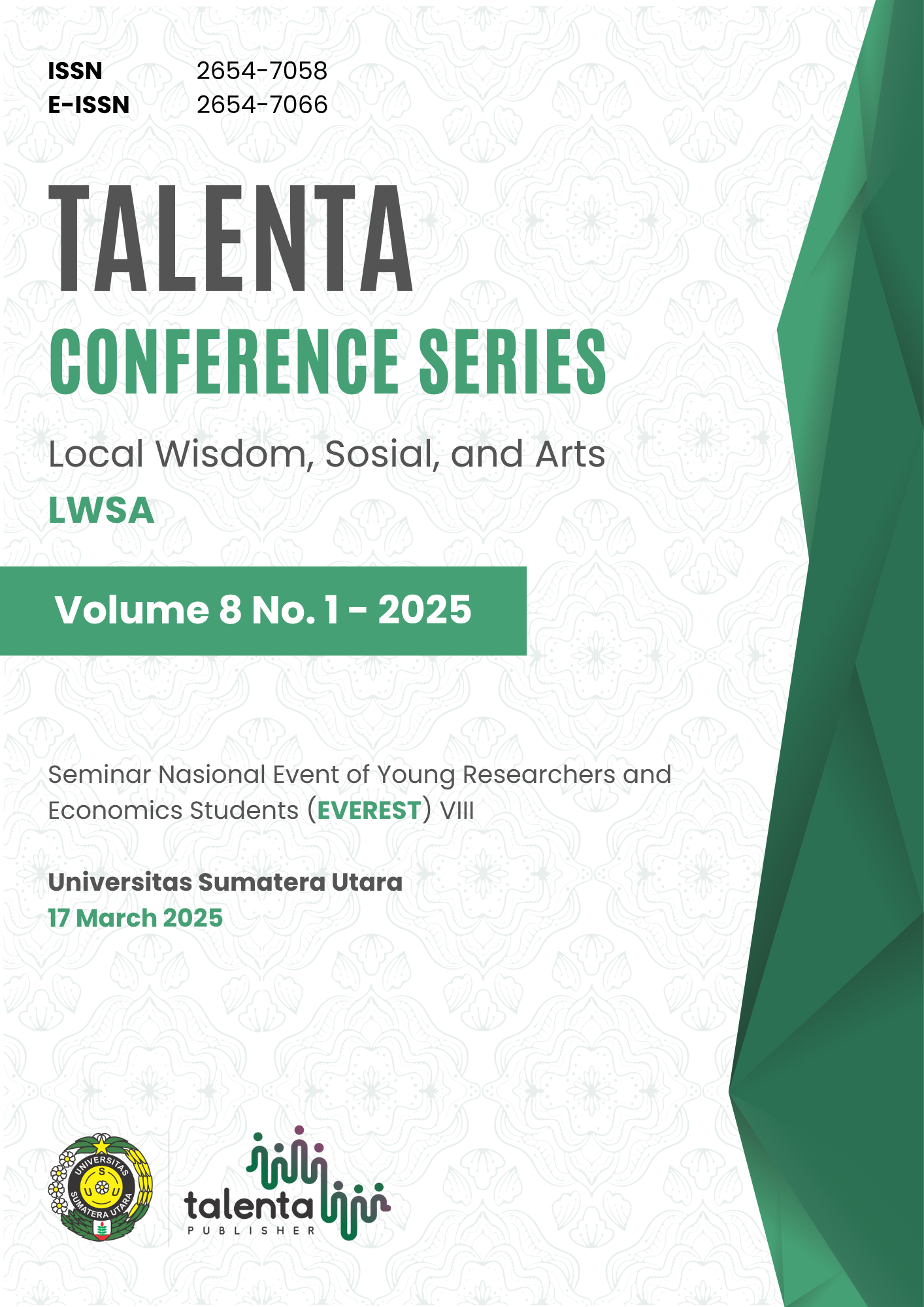Analysis of the Impact of Green Economy on Economic Growth in ASEAN Countries
| Authors | ||
| Issue | Vol 8 No 1 (2025): Talenta Conference Series: Local Wisdom, Social, and Arts (LWSA) | |
| Section | Articles | |
| Section |
Copyright (c) 2025 Talenta Conference Series  This work is licensed under a Creative Commons Attribution-NonCommercial-NoDerivatives 4.0 International License. |
|
| Galley | ||
| DOI: | https://doi.org/10.32734/lwsa.v8i1.2404 | |
| Keywords: | Green Economy Gross Domestic Product (GDP) Agricultural Productivity Life Expectancy Renewable Energy GHG Emissions Emission Intensity Unemployment Rate | |
| Published | 2025-02-28 |
Abstract
The Green Economy is a mechanism that enhances and develops human well-being while reducing environmental risks. In terms of environmental benefits, the Green Economy aims to improve climate by reducing pollution and also plays a crucial role in providing job opportunities and investments, supplying materials and human resources, and supporting poverty alleviation efforts. This study aims to analyze the impact of Renewable Energy, Greenhouse Gas (GHG) Emissions, Emission Intensity, Agricultural Productivity, Unemployment Rate, and Life Expectancy on Gross Domestic Product (GDP) in five ASEAN countries: Indonesia, Malaysia, the Philippines, Thailand, and Vietnam over the period of 2013 – 2022. The research employs a quantitative analysis using secondary data. The study applies panel data regression using the Common Effect Model (CEM) approach, assisted by Eviews 12.0 software. The research findings indicate that Agricultural Productivity, Unemployment Rate, and Life Expectancy have a significant negative impact on Gross Domestic Product (GDP). In contrast, other variables such as Renewable Energy and Greenhouse Gas Emissions do not show any significant influence and have insignificant negative values concerning GDP. Additionally, Emission Intensity exhibits a positive but insignificant value in relation to GDP.






